Trading Diary
September 3, 2005
The S&P 500 encountered support at 1200, on Monday [1] and Tuesday, before the rally on Wednesday penetrated the downward trendline, signaling a loss of momentum. Strong volume [3] often signals a short-term blow-off and Thursday signaled resistance with a weak close and continued high volume. Friday eased back below 1220 on lighter volume, signaling the start of another possible down-swing.
Reversal above the high of [4] would signal that the secondary correction has ended; while a close below 1200, the low of [1], would signal further weakness. A down-swing that respects the trendline would be a bullish sign.
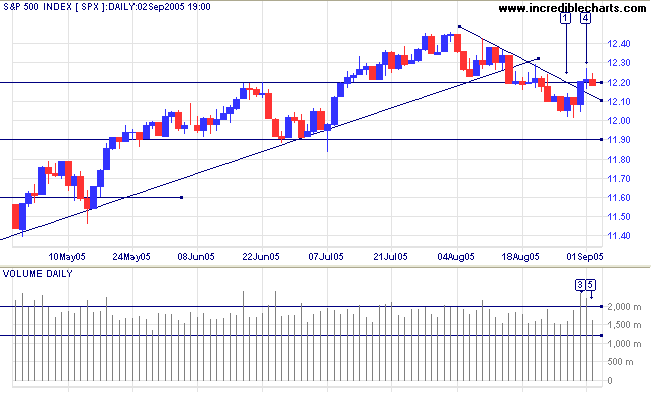
The 25-year point and figure chart below displays what I refer to as the "mega-trend". A higher low in 2003 followed by a new high signals that the market is in a bull phase. If there is a reversal of the primary trend, it is unlikely to fall below 950 (or 1000) and seriously threaten the mega-trend. The real test will come when the index encounters resistance at 1500 (the previous high).
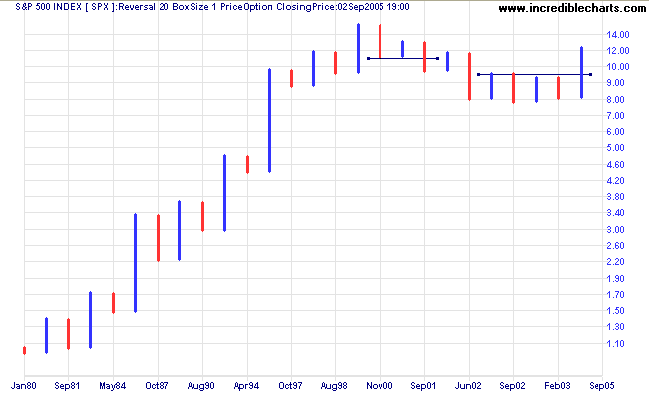
Expect strong resistance overhead at 11000 to 11500, and strong support at 10000. The most likely scenario is for the Dow to range between 10000 and 11000 for some time; which may restrain advances on the S&P 500 and NASDAQ indices.
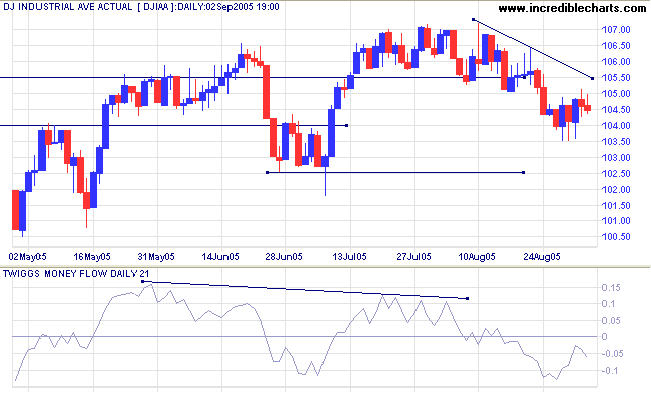
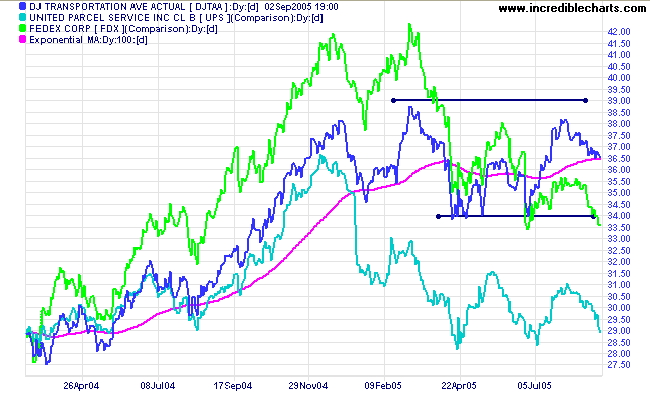
A close below 1900 would signal the start of a primary down-trend.
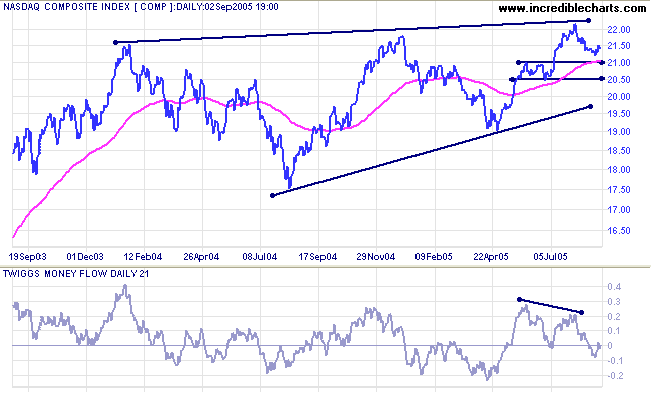
Long-bond yields have fallen back to 4.0%; a negative long-term sign for equities. And the yield differential (10-year T-notes minus 13-week T-bills) is well below 1%, squeezing bank margins. A flat yield curve is detrimental to the profitability of banks, who pay mostly short-term rates to depositors while charging long-term rates to borrowers, and a long-term bear signal for the entire equity market.
This conflicts with the message from the S&P 500 mega-trends chart; so we need to be cautious.
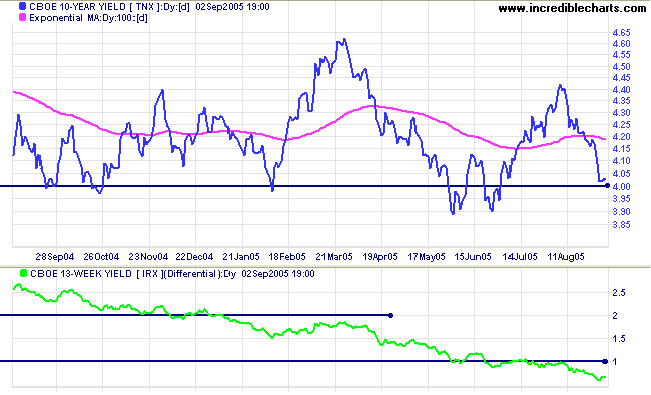
New York: After breaking out from a large symmetrical triangle, spot gold pulled back to test the upper border of the triangle, finding support at $430. The metal since rallied strongly, closing Friday at $442.80, and there is now a clear up-trend (higher high followed by higher low). The target for the breakout is $484: 440 + (454 - 410), but expect resistance at $450 to $454.
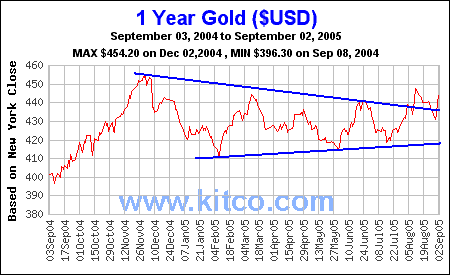
The FTSE 100 pulled back to test resistance at the previous short-term high. Further gains would signal the end of a very short secondary correction: a strong bull signal for the primary trend. Twiggs Money Flow (21-day), however, remains below the zero line, signaling distribution. This would be negated if there is an upward breakout in the next few days.
The primary trend is upward, with some overhead resistance at 5400 and heavy resistance likely at 6000 to 6800.
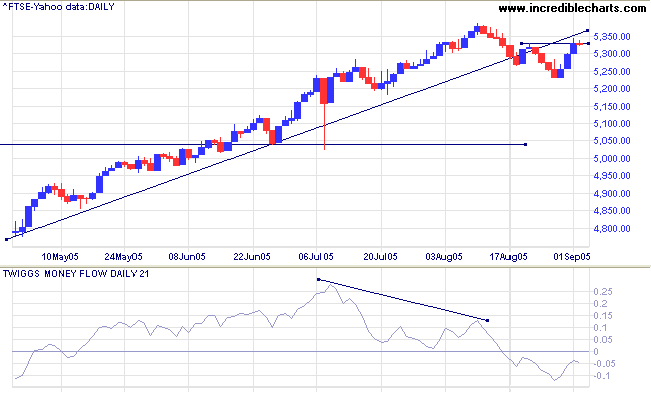
The Nikkei 225 is in a strong up-trend since the breakout above 12000. The latest short-term retracement respected support at 12250 and appears headed for new highs. Twiggs Money Flow (21-day) signals accumulation, having rallied to form a trough above the zero line.
The long-term target for the breakout is 16400: 12000 + ( 12000 - 7600 <the April 2003 low>).
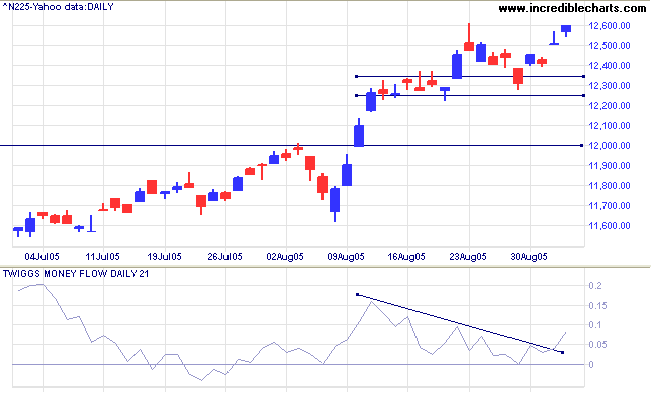
The All Ordinaries fell sharply on Monday [1] before rallying on moderate volume back to resistance at 4460. Friday's tall shadow and weak close suggest another down-swing. The trendline break from late August warns that momentum is slowing and a close below 4360 would signal another secondary correction.
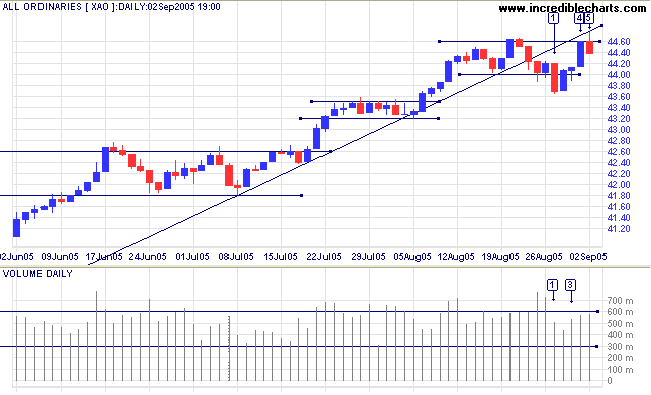
A note of caution: The S&P 500 has a major influence over the behavior of the All Ords and should be watched closely.
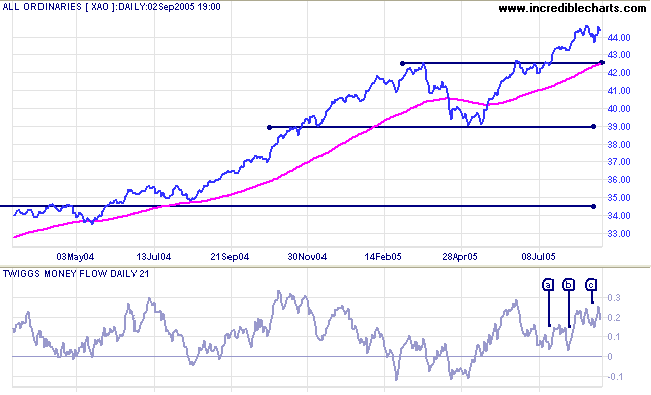
It's a lot tougher to make a difference.
~ Tom Brokaw
Back Issues

Author: Colin Twiggs is a former investment banker with almost 40 years of experience in financial markets. He co-founded Incredible Charts and writes the popular Trading Diary and Patient Investor newsletters.
Using a top-down approach, Colin identifies key macro trends in the global economy before evaluating selected opportunities using a combination of fundamental and technical analysis.
Focusing on interest rates and financial market liquidity as primary drivers of the economic cycle, he warned of the 2008/2009 and 2020 bear markets well ahead of actual events.
He founded PVT Capital (AFSL No. 546090) in May 2023, which offers investment strategy and advice to wholesale clients.
